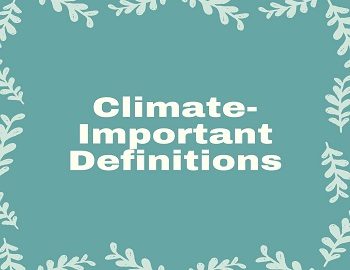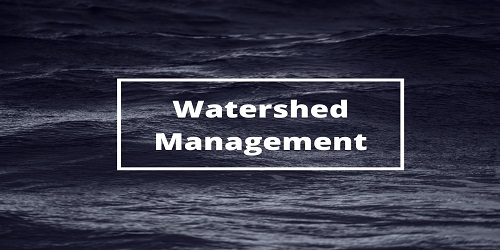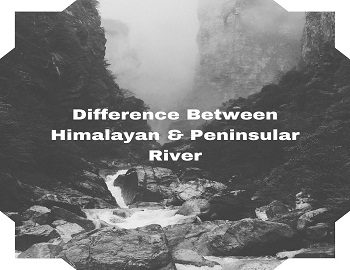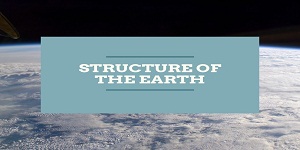Climate- Important Definitions:
- Climate– Climate is the average weather conditions of a large duration, generally 30-35 years.
- Season- The predominance of an element of weather such as temperature, rainfall and cloudiness over a period of a few months is called a season.
- Weather- The atmospheric conditions of a certain place for a certain period, such as air pressure, temperature, wind speed, wind direction, humidity, precipitation, cloudiness is termed as the weather.
- Monsoon Winds- The complete reversal of seasonal winds causing variations in seasons are called monsoon winds. These winds change their direction with change in season.
- Climatic Divide- The predominant land feature which divides the climates of the region on its both sides is known as the climatic divide. For example- the Himalayan Mountain Wall acts as a climatic divide between India and Central Asia.
- Tropical Climate- The climate found in a tropical zone extending between the Tropic of Cancer and the Tropic of Capricorn (between 23° 30′ N and 23° 30′ S) is called tropical climate. Example- The Equatorial Climate, Hot Desert Climate, Savana Climate.
- Trade Winds- Trade winds are planetary winds blowing constantly from the sub-tropical high-pressure zones towards the Equatorial Low-pressure zones. Their direction is from North-east to the South-west in the North Hemisphere and from the South-east to North-west in the South Hemisphere.
- Sub-tropical High-Pressure Zone- The high-pressure zone found near 30° N and S latitudes in both the hemispheres, is the Sub-tropical High-Pressure Belt or Zone.
- Equatorial Low-Pressure Zone- It is a thin belt of low pressure found near the Equator (between 5° N and S).
- Jet Stream- The streams of intensely speedy winds flowing from west to east and east to west in the upper layers of the Troposphere are termed Jet Stream.
- Cyclones- Cyclones are the speedy elliptical wind arrangement having low pressure at their centre and the winds moving towards the centre from outside.
- Burst or Break of Monsoon- Burst or Break of the Monsoon is sudden setting in of rainfall, the rainfall without warning. This occurs when the Monsoon branches and the jet stream come into contact with each other all of a sudden.
- Southern Oscillation- Due to the meteorological changes over the Pacific and the Indian Ocean, there is an opposite relationship between the surface pressure of the subtropical Pacific Ocean and that of the southernmost part of the Indian Ocean. This causes the shifting of winds across the Equator in different seasons. This is known as Southern Oscillation.
- Western Disturbances- Western Disturbances are the moisture-laden cyclones originating over the Mediterranean sea which reach India through Iran, Afghanistan and Pakistan and cause winter rains in the North-western parts of India.
- Loo- Loo is the hot and dry speedy wind moving from west to east in the northern plains of India during summer. It causes temperatures to increase to 45-50° C and causes tremendous loss of life due to extreme heat.
- Cold Wave- The extreme cold weather conditions in winter over the northern plains when temperature fall below 5° C is known as a cold wave.
- Mango Shower- The pre-monsoon showers occurring in the coastal regions of Kerala and Karnataka and beneficial to the ripening of mango fruit are called Mango Showers.
- Kalbaisakhi (Norwesters)- Kalbaisakhi is a locally formed thunderstorm during the summer evenings in Assam and West Bengal and causes havoc in the adjoining areas.
- Period of Transition- The intervening period between two seasons is known as the Period of Transition.
- Equable Climate- It is the climate in which there is not much variation in temperatures and the amount of rainfall.
- Precipitation- It is the moisture shed by the moisture-laden winds on the surface of the earth. Precipitation includes rainfall, snowfall, hailstorm, sleet etc.
- Maritime Clouds- These are the clouds that come into existence due to the condensation over the ocean or sea, and influence coastal areas.









Comments (No)